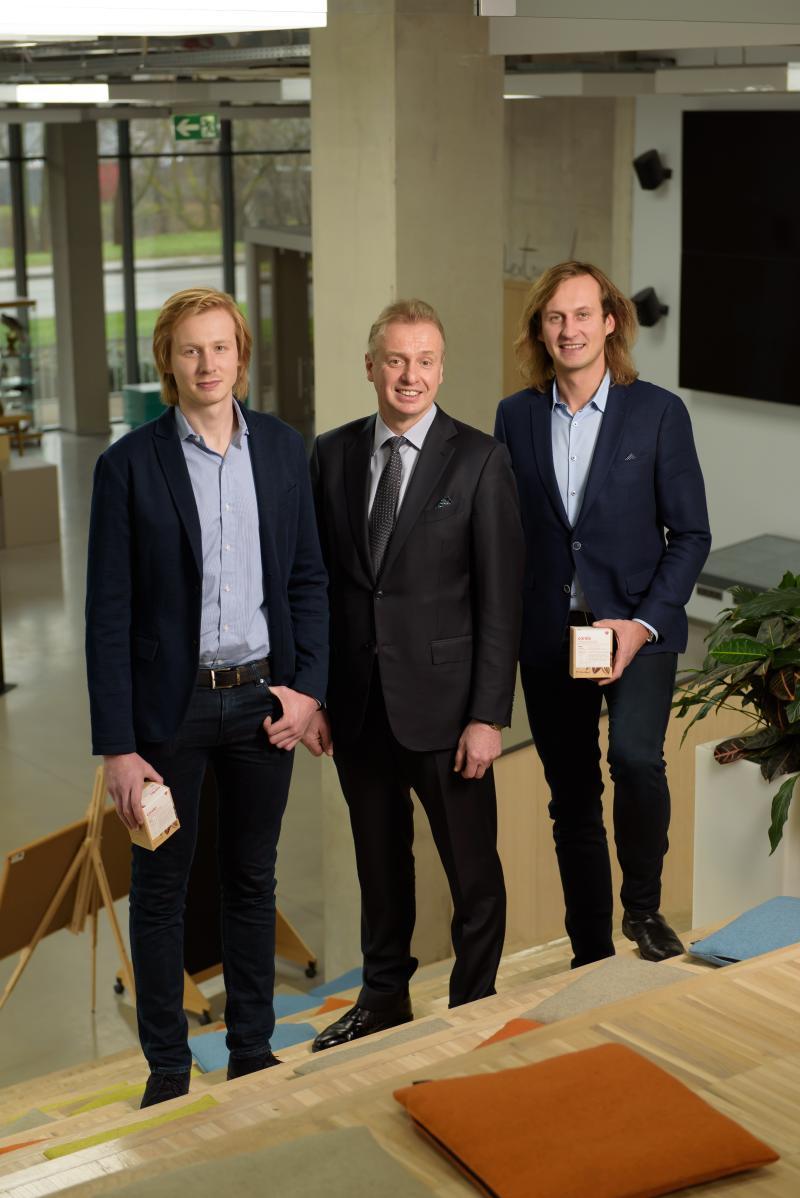With its new campus, the University of Latvia aims to expand its innovations, beyond its existing achievements in quantum computing—and chocolate pills.
Andrejs Erglis, the director of University of Latvia’s Research Institute of Cardiology was playing tennis with Aivars Žimants, a founder of a local chocolate producer. In the dressing room, they combined their knowledge of cocoa and the cardiovascular system, and an idea was born: a chocolate that a doctor could recommend.
Here’s how they made it happen. Professor Erglis had directed a study at the University of Latvia on the influence of natural substances (such as chocolate) in helping patients with high cholesterol and increased inflammatory markers. His sons Kristaps and Martins worked with the chocolate factory, established a company called Purified, and less than nine months later they had a finished product. These were small pills of Belgian dark chocolate, laced with heart-friendly vitamins and compound, packaged in foil that you would more likely associate with aspirin, and complete with the instruction to take “four tablets a day with a glass of water”.
The innovation, generated at the university with the support of EU grants, has now been extended to other chocolate pills. These have health benefits for vision, staying in shape and more. They can already be purchased in several European markets, as well as the United Arab Emirates and China.
"This cooperation between science and industry was very efficient and flexible. A team of scientists and food technologists, as well as experienced entrepreneurs contributed to the development," recalls Kristaps Erglis.

Professor Erglis with his two sons – Kristaps (right), and Martins (left) holding boxes of the ‘cardiochocolate’ they developed together.
A bloodline for the university
Kristaps had meanwhile followed in his father’s footsteps. After a bachelor’s degree in law, he “understood what really interested” him and studied medicine at University of Latvia. As did his brother Martins, who is currently doing a residency in cardiac surgery at the university. Martins is also acting as chairman of the board of the chocolate pill company.
The fact that both sons of the cardiology professor went on to study at the same university is not that unusual, considering the University of Latvia is already one of the largest research and teaching universities in the country. It has about 15 100 students, representing 18% of the total market for higher education.
Now the university wants to increase net enrolment by 2 400 students by 2022, including a doubling of the number of international students. An increase in enrolments as well as stronger scientific activity and research outputs will also contribute to a projected fourfold increase in revenues for the university from knowledge transfer activities such as the cardio-chocolate invention. These are central to the university’s plan to build a brand new campus.
So when a team from the European Investment Bank flew over to have a closer look at the new campus project, they were presented—you guessed it—with a box of cardio-chocolate pills.
“What they are doing is really contributing to the future of higher education in Latvia, and on attracting more research and development to Latvia, which the country badly needs,” says the EIB’s loan officer for the public sector in the Baltics and Poland Jochen Von Kameke. “They are taking a fundamental step away from obsolete buildings scattered across Riga to a centralized, modern campus able to compete with Western European standards.”
The investment totals EUR 90 million, of which the EIB is providing a third. The loan is included in the Investment Plan for Europe portfolio, partially guaranteed by the European Commission, and should altogether contribute to better teaching and research facilities and a more efficient real estate management and better cost-effectiveness of the university. EIB provided the university with a 25 year loan – a length of time that the private sector would not have been able to provide, and without requiring a government guarantee.
Stars, Chinese, and nanowire switches
Chocolate is just one example of the university’s research potential. Researchers and professors at the University of Latvia have also been working on:
- nanomaterials and nanotechnologies
- quantum computing algorithms
- energy efficient pumps for melt aluminium;
- skin stem cells
- a Chinese - Latvian dictionary
- a catalogue of stars, and even found a new asteroid (Baldone)
- and more.
In the coming years Indriķis Muižnieks, rector of the University of Latvia, hopes to double total funding for science and increase the number of scientific staff by 20% in the natural and medical sciences and 10% in humanities and educational sciences. His plan includes attracting more students and the enrolment fees associated with them, as well as providing researchers at the university with more modern facilities so they can be better positioned to get research grants.
Kristaps Erglis, meanwhile, hopes the chocolate can also contribute. “I hope it will encourage people to study and to come up with innovative ideas,” he says.
